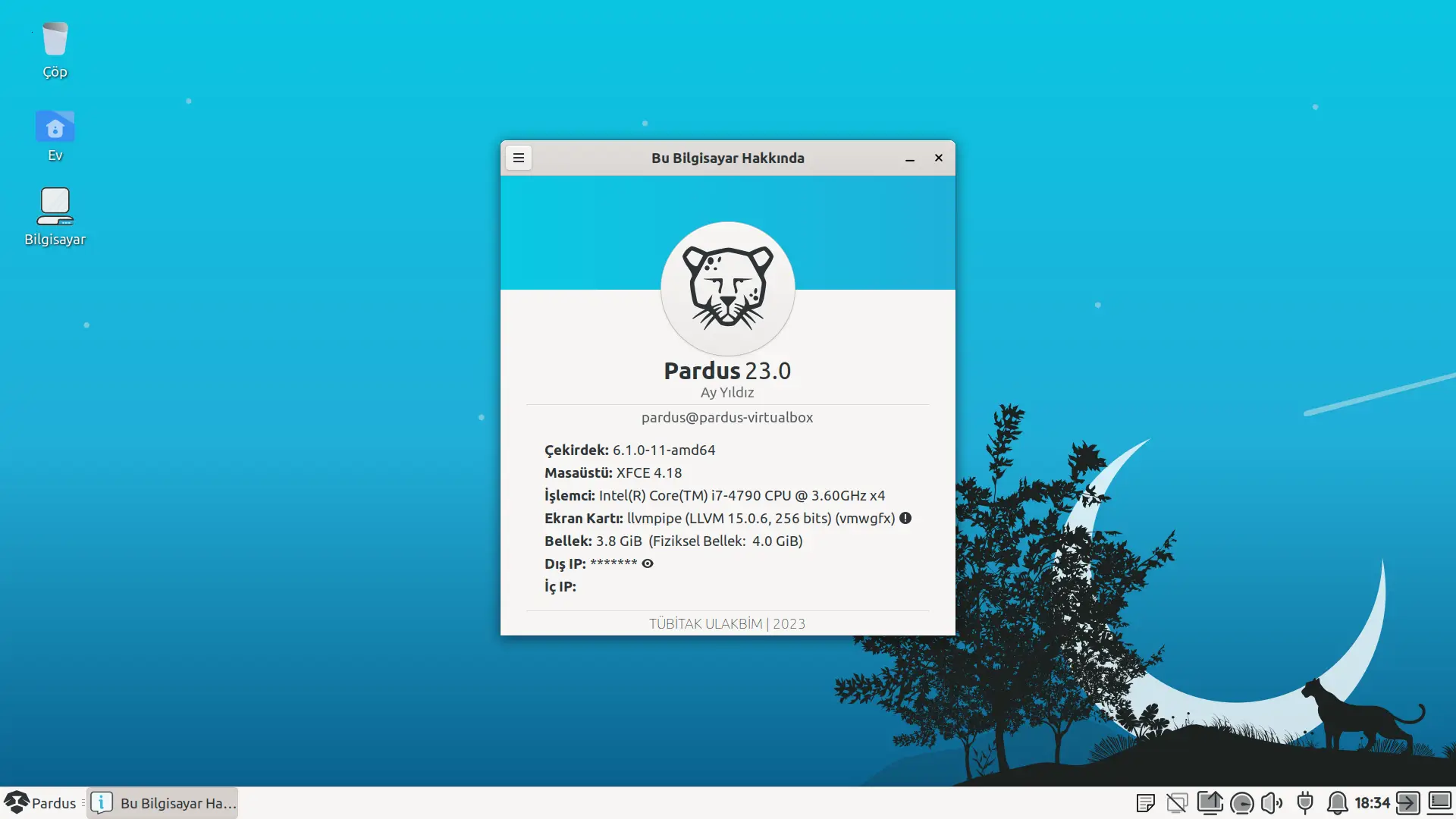
Kurumsal yapılarda verimliliği artırmak ve ihtiyaçları karşılamak için kullanılan bilişim sistemlerinin ve yazılımların çeşitliliği her geçen gün artıyor. Kurumsal iş süreçleri, kullanıcıların alışkanlıkları, finansal ölçütler vb birçok parametre bu sistemler ve yazılımlar etrafında şekilleniyor. Hatta kurumsal stratejilerin belirlenmesinde ve aksiyonların alınmasında da rol oynuyorlar. Bu bakımdan her geçen gün kurumsal yapılar için daha önemli ve vazgeçilmez olmaya devam ediyorlar. Peki kurumların bu sistemler ve yazılımları seçme konusundaki müşteri davranışları neye göre değişiyor? Gerçekten efektif olan sistem ve yazılımlar mı tercih ediliyor? Alışılagelmiş, güven veren veya popüler olan ürünler mi tercih ediliyor? Maliyet konusu tercihleri ne şekilde etkiliyor? Ürün tercihlerinde siber güvenlik ile ilgili beklentilerin etkileri ne seviyede? Bu yazıda, bu sorular etrafında dolaşarak kurumsal yapılarda açık kaynak kodlu sistem ve yazılımlara dönüşümü irdeleyeceğiz.
Günümüzde neredeyse her ticari ürünün bir açık kaynak kodlu muadili bulunuyor. Belki de bunun tam tersini de söyleyebiliriz, çünkü bir çok ticari ürünün açık kaynak kodlu yazılımları ürünlerinde kullandıklarını biliyoruz. Bu bakımdan açık kaynak kodlu ürünlerin ticari ürünler seviyesinde ihtiyaçlara cevap verebildiği bir noktadayız. Geçmişte hem ürün çeşitliliği anlamında hem de ürünleşme noktasında açık kaynak kodlu sistem ve yazılımların ticari ürünlerin gerisinde kaldığını söyleyebiliriz. Ama bugün geldiğimiz noktada güçler eşitlendi diyebiliriz. Çeşitli kurumların açık kaynak kodlu ürünleri yaygın bir şekilde kullanması da bu durumu ispatlar nitelikte. Artık kurumsal yapılar ticari ürünleri açık kaynak kodlu muadilleri ile değiştirerek açık kaynak dönüşümü yapıyorlar. Peki bu dönüşümü neden yapıyorlar?
Açık Kaynak Kodlu Yazılımların Avantajları
Gerek kamu kurumları gerekse ticari işletmeler açık kaynak kodlu sistem ve yazılımların kullanımı noktasında bir çok avantajı değerlendirmek için dönüşüm çalışması yapıyor. Bu avantajları özetlemek gerekirse şu 3 avantaj ön plana çıkıyor.
• Maliyet
• Siber Güvenlik
• Esneklik
Açık kaynak kodlu sistemlerin en çok göze önünde olan ve ölçülebilen avantajı maliyet avantajı. Ticari ürünlerin üretilme maksadı kar elde etmek olduğundan hem ilk satışında hem de sonraki kullanım dönemlerinde ciddi lisans maliyetleri ortaya çıkıyor. Geçmişten günümüze kadar ticari ürünlerin daha iyi olduğu, daha güvenilir olduğu, müşteriye sorun yaşatmayacağına dair bir algı oluşturulmaya çalışılıyor. Müşteriler de aslında bu şekilde ihtiyaçlarının garantili bir şekilde karşılanacağını düşünebiliyor. Fakat günümüzde açık kaynak kodlu sistemler ve yazılımlar, ticari ürünlerin sağladığını iddia ettiği avantajların fazlasını sağlama noktasında kendi ispat etmiş konumda. Öyle ki ticari ürünlerin büyük çoğunluğu kendi ürünlerinin içerisinde açık kaynak kodlu yazılım ve sistemlerden faydalanıyor. Bu yüzden kurumlar, benzer işi yapan ürünler için neden daha fazla maliyete katlanmalıyız? Maliyet avantajını neden kullanmıyoruz? Sorularını sıkça soruyorlar.
Kurumsal sistemler ve yazılımlarla ilgili bilgi güvenliği konusunda konuşulacak bir çok nokta var. Bilgi güvenliği tabirinin multidisipliner olması, bir çok farklı sisteme dokunması ve saldırıların çeşitliliği gibi durumlar bu konuyu genişlettikçe genişletiyor. Siber güvenlik konusunu açık kaynak kodlu sistem dönüşümü özelinde özetleyecek olursak 2 ana başlık üzerinde durabiliriz.
Birincisi ticari ürünlerin belirli devletler tarafından, belirli istihbarat standartlarını sağlayacak şekilde üretildiğini ve üreticilerin bu konuda zorlandığını biliyoruz.(1)Yine devlet seviyesinde bazı ticari ürünlerin satışının engellendiği bilinen bir durum. (2) Bilgi güvenliği cihazlarından, işletim sistemlerine, kurumsal yazılımlara birçok üründe istihbarat faaliyetleri için kullanılmak üzere backdoor ların, arka kapıların bulunduğu biliniyor. Bununla ilgili küresel basına yansıyan bir çok haber bulabiliyor. Kamu kurumlarında kullanılan yazılım ve sistemleri bu istihbarat çalışmalarından korumak adına açık kaynak kodlu sistemler öne çıkıyor çünkü açık kaynak kodlu sistemlerin büyük çoğunluğunda ve Pardus’ta bu tarz arka kapılar bulunmuyor. Çünkü açık kaynak kodlu sistemlerin kaynak kodlarını görebiliyor ve analiz edebiliyoruz.
İkincisi siber dünyada hedef alınan sistemler siber saldırıların doğası gereği en çok kullanılan ürünler oluyor. Yani kullanıcılar tarafından en çok tercih edilen ürünler nelerse, örneğin işletim sistemi olarak Windows veya en çok kullanılan kurumsal güvenlik duvarları hedef alınıyor. Sayılarla konuşmak gerekirse tüm zamanlarda Windows için tespit edilen malware sayısı Linux sürümlerinin tamamı için üretilen malware sayısının 200 katına yakın diyebiliriz.(3) Bu istatistiğe referans olan kaynaktaki rakamların, blogun kaleme alınmasından sonra, zamanla arttığını da görebilirsiniz. Bu bağlamda Pardus ve açık kaynak kodlu sistemleri kullanmanın, virüslerden ve saldırılardan kat ve kat daha az etkilenmeyi sağlayacağını söyleyebiliriz. Çıkarımda bulunmanın ötesinde dönüşüm yapan kurumlarda siber güvenlik noktasında siber güvenlik olaylarındaki azalmalara da şahit oluyoruz.

Açık kaynak kodlu sistemlerin kaynak kodlarının görülebiliyor olması siber güvenliğin yanı sıra bu kodlara müdahale edebilme noktasında esneklik sağlıyor. Bu esneklik sayesinde müşteri özelinde ihtiyaç duyulan özellikler eklenebiliyor veya mevcut özellikler değiştirilebiliyor. Teknik imkanlar elverdiği ölçüde açık kaynak kodlu sistemleri sınırsız diyebileceğimiz bir seviyede esnetebiliyoruz. Bu noktada açık kaynak kodlu yazılımlar üzerinde ihtiyaç duyulan geliştirmelerin kim tarafından yapılacağı sorusu öne çıkıyor. Açık kaynak kodlu sistemler geliştirme toplulukları (community) tarafından üretildiği için doğrudan bu topluluklardan, ülkemizdeki konuyla ilgili yazılım geliştirebilen çözüm ortaklarından destek almak veya kurumun kendi personeli tarafından geliştirme yapmak mümkün. Örneğin; Pardus ve bazı açık kaynak kodlu sistemler için TÜBİTAK ULAKBİM Pardus ekibi olarak kaynak kodu seviyesinde destek verebiliyoruz. Elbette bütün açık kaynak kodlu sistemlere TÜBİTAK olarak kod anlamında destek vermemiz mümkün değil. Bu gibi durumlarda çözüm ortaklarımızla veya doğrudan üreticilerle çalışmalar yapabilmekteyiz. Geçmişte Pardus’tan , video konferans sistemlerine, ofis yazılımlarına bir çok açık kaynak kodlu sistem için kaynak kodu seviyesinde geliştirmeler yapılmış ve halen yapılmaya devam etmektedir.
Pardus ve Açık Kaynak Kodlu Dönüşüm Yapan Başlıca Kurumlar
TÜBİTAK ULAKBİM olarak bir çok kurumun açık kaynak dönüşüm çalışmalarına katkı sağlıyoruz. Bu kurumlardaki dönüşüm çalışmalarının bazılarını bizzat TÜBİTAK ULAKBİM olarak biz gerçekleştirirken, bir kısmını çözüm ortaklarımız, bir kısmını da kurumlar kendi imkanları ile gerçekleştirdiler. Pardus ve açık kaynak dönüşüm çalışması yapan kurumların hemen hepsinde TÜBİTAK ULAKBİM olarak az veya çok katkımız olmaktadır.
Pardus ve açık kaynak kodlu sistemlere dönüşümünü gerçekleştirmiş kamu kurumlardan bazıları:
• Milli Eğitim Bakanlığı sayısal olarak en büyük Pardus kullanımı olan kurumların başında geliyor. Pardus Etkileşimli Tahta versiyonunu 150.000 civarında cihazda kullanıyor.
• Ziraat Katılım Bankası bütün şubelerinde Pardus kullanırken kurumsal bilgi sistemlerinde de birçok açık kaynak kodlu sistem kullanmakta.
• Strateji ve Bütçe Başkanlığı da benzer şekilde kurum genelinde Pardus ve çeşitli açık kaynak kodlu sistemler kullanıyor.
• Diyanet İşleri Başkanlığı Pardus ve açık kaynak kodlu dönüşümü hayata geçiren önemli kurumlarımızdan biri.
• AFAD kurum bünyesinde yine Pardus ve çeşitli açık kaynak kodlu yazılımlar kullanıyor.
• Sağlık Bakanlığı kendi bünyesinde özellikle açık kaynak kodlu sistemlere dönüşümde önemli bir noktada bulunuyor. Ayrıca Pardus kullanımına yönelik de çalışmaları sürüyor.
• Bursa Kamu Hastanelerinde Pardus ve açık kaynak kodlu yazılımlar kullanılıyor.
• TÜRK TELEKOM ile sunucu tarafında Pardus çalışmaları yapılıyor, ayrıca açık kaynak kodlu yazılımların kullanımı ile ilgili de çalışmalar yapılıyor.
• MSB ASAL şubelerinin tamamında Pardus kullanıyor.
Açık kaynak dönüşümü yapan büyük ölçekli kamu kurumlarını bu şekilde sıralayabiliriz. Bu bahsettiğimiz kurumların dışında da açık kaynak dönüşümü yapan birçok kurum mevcut. TÜBİTAK ULAKBİM olarak; Açık kaynak kodlu yazılım ve sistemlere geçiş yapmak isteyen çeşitli kurum ve kuruluşlarla çalışmalarımız devam ediyor. Siz de kurum olarak açık kaynak kodlu yazılım ve sistemlere geçiş yapmayı düşünüyorsanız TÜBİTAK ULAKBİM Pardus ekibiyle temasa geçebilirsiniz.
Referanslar:




